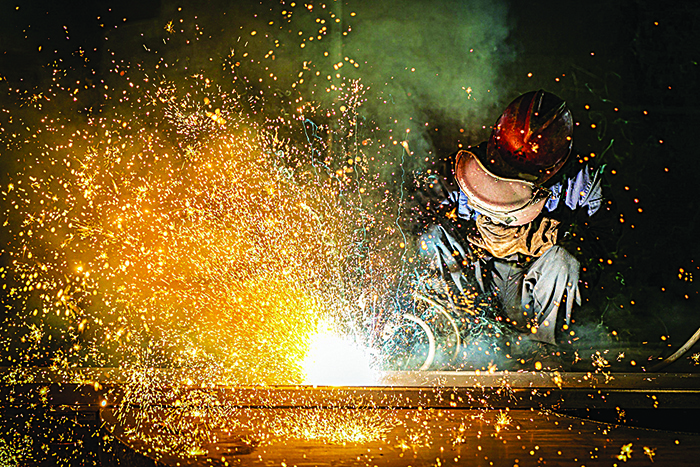 NANTONG, China: This photo taken on May 26, 2021 shows a worker producing manufacturing machine at a factory in China’s eastern Jiangsu province. —AFP
NANTONG, China: This photo taken on May 26, 2021 shows a worker producing manufacturing machine at a factory in China’s eastern Jiangsu province. —AFPBEIJING: Factory activity in China nudged down slightly in May on slower demand and higher raw material prices, while the services industry boomed over the Labor Day break, official data showed yesterday. The Purchasing Managers’ Index (PMI), a key gauge of China’s manufacturing activity, was 51.0 - slightly down from 51.1 in April but above the mark separating growth from contraction, said the National Bureau of Statistics.
But there are risks ahead, analysts warned, including shortages of parts - especially semiconductors - and rising commodity prices. Although factory production has been “rising steadily”, with overall activity exceeding the same periods in the past two years, demand growth has slowed, said NBS senior statistician Zhao Qinghe. The new export order index fell, he said, “reflecting the decrease in foreign orders”.
Capital Economics said in a recent note that there are “few signs” of easing, with freight rates still going up. Meanwhile, the purchasing prices of major raw materials remains high, said the NBS. On top of that, a fresh wave of COVID-19 in Asian countries and the resurgence in China’s Guangdong province will also “hurt some small exporters in the region”, said Betty Wang, senior China economist at ANZ Research.
Yesterday, the southern province reported 20 new local virus cases, most of them in the provincial capital of the manufacturing hub. Wang also said there is a need to keep an eye on the currency situation. Last week, the yuan hit a three-year high against the dollar. And Iris Pang, chief economist for Greater China at ING, said the risks include chip shortages.
In May, China’s non-manufacturing PMI rose to 55.2, with a Labor Day holiday consumer boom supported by long-distance domestic travel and accommodation. “The consumer market is showing a positive recovery momentum,” said Zhao from the NBS, adding that construction activity - another key factor - also went up. China’s economy has largely rebounded from the coronavirus lockdowns last year, although the consumer recovery has been lagging behind that of industrial activity. —AFP









